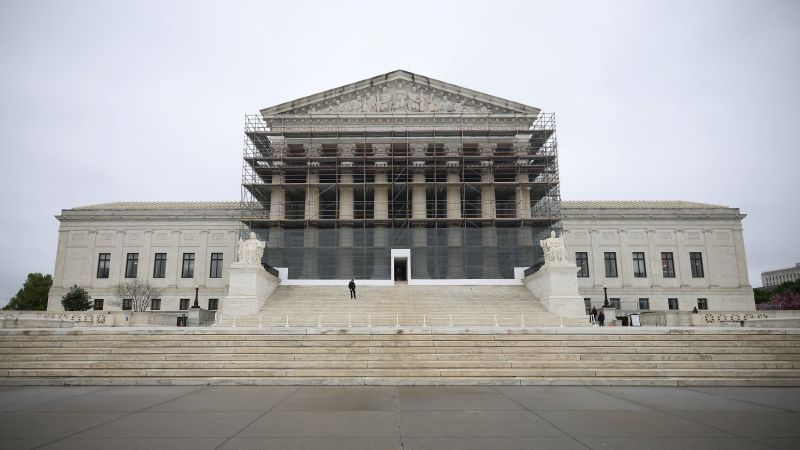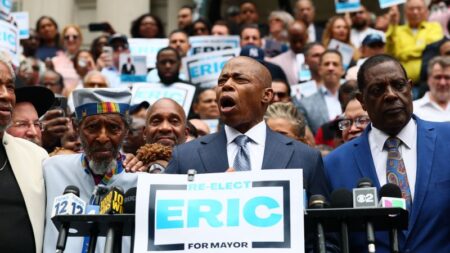The United States Supreme Court recently decided to delay its ruling on a significant case involving Louisiana’s congressional district map, which has been a subject of legal contention for an extended period. This unusual move allows the case to extend into the court’s next term, essentially postponing a decision that could have far-reaching implications on the political landscape of Louisiana and, potentially, across the nation.
At the crux of this legal confrontation is Louisiana’s congressional representation, specifically the creation of a second majority Black district within the predominantly Republican delegation. The Supreme Court’s decision to hold off on ruling means that this revised district, which has already enabled the election of a second Black and Democratic lawmaker, will remain intact for now. The high court indicated that it will reevaluate the arguments surrounding the case when the next term commences in the fall, raising anticipation for political analysts and citizens alike.
Justice Clarence Thomas, known for his conservative views, expressed dissent regarding the delay in addressing the appeal. He contended that the judiciary has a responsibility to resolve constitutional challenges concerning congressional redistricting in a timely manner. Louisiana’s predicament stems from conflicting judicial outcomes; while an earlier federal court found that the state was likely in violation of the Voting Rights Act by designing only one majority Black district out of six, the state faced backlash when it attempted to rectify this by creating an additional majority Black district. A group of voters, identifying themselves as non-Black, contested this move, claiming it led to discrimination against them and violated constitutional principles by emphasizing race too heavily in the redistricting process.
Justice Thomas articulated in his dissent that he believed the section of the Voting Rights Act pertinent to this case might be unconstitutional. The act itself was implemented to prevent states from undermining the influence of minority voters during the crucial redistricting phase following the decennial census. This statute especially aims to combat practices such as “packing” voters into singular districts or “cracking” them across various districts to dilute their voting power, a direct response to historical efforts to diminish the political clout of African Americans in the post-Civil War era, particularly throughout the Southern states.
However, this legal issue is compounded by the equal protection clause of the 14th Amendment, which stipulates that states should not base their congressional maps predominantly on race. Consequently, if a map is drawn with significant racial considerations, the state must showcase compelling justification for such actions and adopt the narrowest means available to achieve its goals. This conundrum creates a complex legal atmosphere where the Supreme Court has historically granted states “breathing room” in delineating district boundaries.
As the landscape evolves, the Court’s conservative majority has grown increasingly skeptical of policies that separate individuals or groups based on race, raising questions about the permissible extent of racial considerations in legislative redistricting. This skepticism was notably illustrated in a landmark 2023 ruling, wherein affirmative action in college admissions was dismantled, a move leveraged by the Trump administration to justify reductions in diversity initiatives across various sectors.
Over recent years, the Supreme Court has increasingly trimmed the authority of the Voting Rights Act through significant rulings, notably a 2013 decision that removed the requirement for states with a history of racist policies to seek preapproval from the federal government for any changes to voting rights laws. Notably, though, a contradicting decision a decade later compelled Alabama to redraw its maps to accommodate an extra majority Black district, signaling that the high court’s stance on voting rights is not entirely predictable.
In Louisiana, the new district created slices through the state, running roughly 250 miles from Shreveport in the northwest to Baton Rouge in the southeast. It aims to ensure that Black residents constitute a significant majority of 54% of voters based on this redistricting, a substantial increase from the previous configuration. During oral presentations made to the court, Chief Justice John Roberts remarked on the peculiar shape of the district, likening it to a “snake” traversing from one end of the state to the other.
The political ramifications of this case are significant, with figures such as Rep. Cleo Fields, a Democrat, having recently secured a seat in last year’s election. The Biden administration, although officially neutral, submitted a brief that cautioned against dismissing the current map while reflecting on prior government stances under the Trump administration, adding further layers of complexity to an already intricate legal battle. As national attention focuses on this case, its outcome may resonate far beyond Louisiana’s borders, impacting how representatives are elected across the United States in the future.











